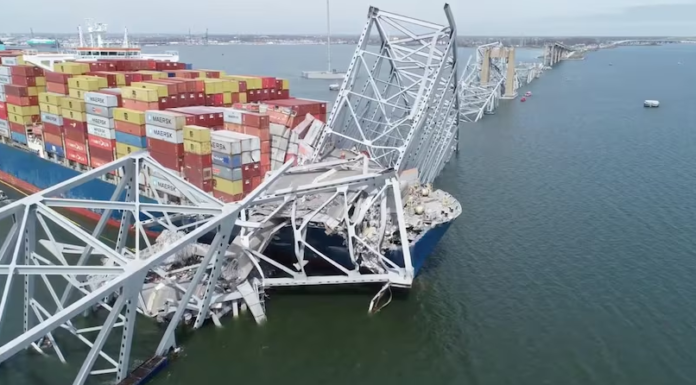The U.S. Army Corps of Engineers announced plans on Thursday to open a new channel to the Port of Baltimore by the end of April, facilitating commercial shipping that has been blocked due to a collapsed bridge. The bridge collapse occurred when the fully loaded container ship Dali lost power and collided with a support column of the Francis Scott Key Bridge on March 26, resulting in the tragic loss of six road workers and the bridge tumbling into the Patapsco River.
As part of the response to the Baltimore disaster, the Army Corps, collaborating with multiple agencies, disclosed the timeline a day before President Joe Biden’s scheduled visit. Within four weeks, the channel is anticipated to accommodate roll-on/roll-off vessels used for transporting automobiles and farm equipment.
Read More: Apple to Lay Off 614 Employees Following Abandonment of EV Project
The Port of Baltimore, renowned for handling high volumes of autos, light trucks, and farm and construction machinery in the United States, has experienced a significant disruption in operations following the accident. While some terminal operations outside the affected area have resumed, the main channel remains blocked.
In response to the situation, two auxiliary channels suitable for emergency vessels have been opened on either side of the disabled ship. However, with limited depths of 11 feet and 14 feet, these channels are unsuitable for major cargo ships requiring a depth of 35 feet.
The Corps of Engineers aims to establish a limited access channel, 280 feet wide and 35 feet deep, to the Port of Baltimore by the end of April. By the end of May, the restoration of port access to full capacity is anticipated with a navigation channel measuring 700 feet wide and 50 feet deep.
Before achieving this goal, salvage crews must first remove steel bridge debris obstructing the Dali and clear the twisted metal and highway wreckage from the harbor. Tragically, within this debris lie the remains of four of the six highway workers who lost their lives in the incident.



